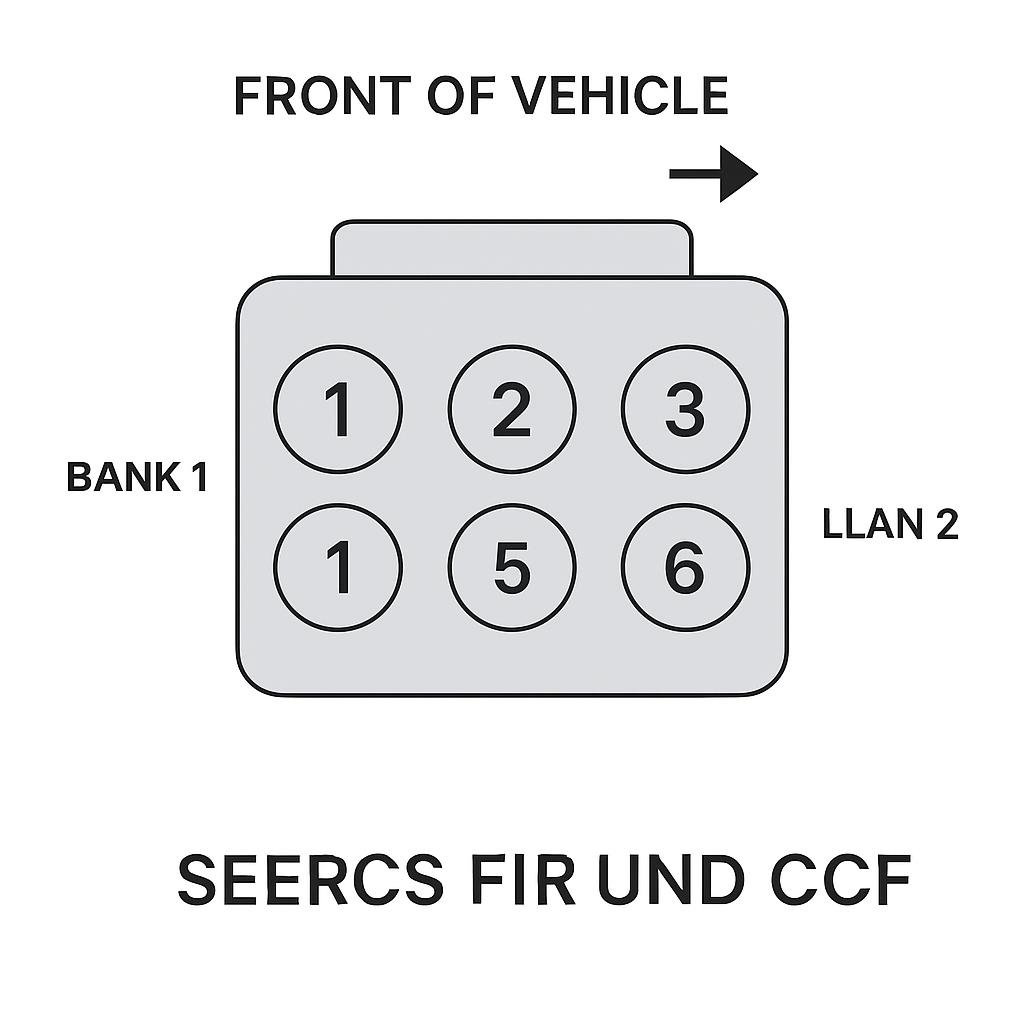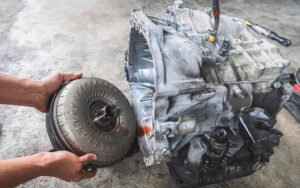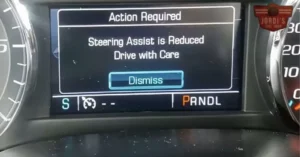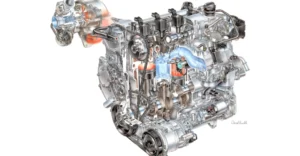If you’ve ever popped the hood of your GMC Acadia and stared at that V6 engine wondering how all six cylinders work together in such perfect harmony, you’re not alone. I remember the first time I worked on my Acadia — a 2012 model — and discovered how important the firing order really is.
It’s not just a technical detail hidden in a manual; it’s what makes the engine run smoothly, deliver consistent power, and avoid misfires that can ruin your day.
Whether you’re dealing with a check engine light, changing spark plugs, or just learning how your vehicle works, understanding the firing order helps you diagnose problems faster and maintain performance.
So, in this post, I’ll walk you through everything you need to know about the GMC Acadia’s firing order — from the 2007 model to the latest 2023 version — in simple, everyday language.
Understanding the Basics of Firing Order
Before diving into the GMC Acadia specifically, let’s quickly unpack what a firing order means. The firing order refers to the sequence in which the engine’s cylinders ignite. Every time a spark plug fires, it ignites the air-fuel mixture inside a cylinder, creating a small explosion that pushes the piston down and generates power.
Now, in a V6 engine like the Acadia’s, these explosions need to happen in a precise rhythm. If they don’t, you’ll feel rough idling, poor acceleration, and even engine vibrations. The firing order ensures that power is evenly distributed, balancing the crankshaft and preventing unnecessary wear.
Most GM V6 engines — including those used in the Acadia — follow a standard firing order pattern. But depending on the engine generation and design updates, there are small differences between model years.
GMC Acadia Engines from 2007 to 2023
The GMC Acadia has used several V6 engines over its lifespan, each with distinct characteristics but sharing similar engineering DNA. Here’s a quick breakdown of the engines used in each generation:
First Generation (2007–2016)
- Engine Options:
- 3.6L LY7 V6 (2007–2009)
- 3.6L LLT V6 (2010–2016)
- 3.6L LY7 V6 (2007–2009)
- Configuration: V6, DOHC
- Firing Order: 1-2-3-4-5-6
- Cylinder Layout:
- Bank 1: Cylinders 1-3-5 (front to rear, passenger side)
- Bank 2: Cylinders 2-4-6 (front to rear, driver side)
- Bank 1: Cylinders 1-3-5 (front to rear, passenger side)
Second Generation (2017–2023)
- Engine Options:
- 2.5L LCV I4 (base models, 2017–2020)
- 3.6L LGX V6 (2017–2023)
- 2.0L Turbo LSY (2020–2023)
- 2.5L LCV I4 (base models, 2017–2020)
- Firing Order (V6 models): 1-2-3-4-5-6
- Firing Order (I4 Turbo models): 1-3-4-2
The firing order remained the same for V6 engines throughout both generations, which makes maintenance and diagnosis relatively straightforward.
Diagram: GMC Acadia 3.6L V6 Cylinder Layout
(Imagine an illustration here showing both cylinder banks, labeled 1–6)
Front of Vehicle
——————————–
Passenger Side: 1 | 3 | 5
Driver Side: 2 | 4 | 6
——————————–
Firing Order: 1-2-3-4-5-6
This simple diagram helps you visualize which cylinder is which when replacing ignition coils, spark plugs, or fuel injectors.
How the Firing Order Affects Engine Performance
Think of the firing order like a musical rhythm — when it’s in sync, the engine sounds and feels smooth. But if one cylinder fires out of turn, the whole system falls apart.
Here’s what happens when the firing order is correct:
- Power strokes alternate between cylinder banks evenly.
- The crankshaft rotation stays balanced.
- Engine vibration is minimal.
- Fuel economy and performance remain optimal.
However, when the firing sequence is off — due to incorrect spark plug wiring, bad ignition coils, or a misfire — you might experience:
- Rough idle or shaking at stoplights.
- Sudden loss of power.
- Poor fuel mileage.
- A flashing “Check Engine” light indicating a misfire code (often P0300–P0306).
Firing Order for Each Engine Explained
1. 3.6L LY7 V6 (2007–2009)
The original LY7 V6 engine was part of GM’s “High Feature” V6 family. It delivered around 275 horsepower and 251 lb-ft of torque, using variable valve timing and a timing chain instead of a belt.
- Firing Order: 1-2-3-4-5-6
- Spark Plug Gap: 0.043 inches
- Oil Capacity: 6 quarts (with filter)
- Common Misfire Cause: Faulty coil packs and worn plugs.
This engine runs best when all cylinders fire sequentially from front to back, maintaining even power delivery through the crankshaft.
2. 3.6L LLT V6 (2010–2016)
The LLT version brought direct fuel injection, which improved power to 288 hp and enhanced fuel efficiency.
- Firing Order: 1-2-3-4-5-6
- Cylinder Layout: Passenger side 1-3-5, driver side 2-4-6
- Tip: When replacing ignition coils, always note the cylinder numbering. Mixing them up causes rough idling or misfire codes.
3. 2.5L LCV I4 (2017–2020)
Some base models of the second-gen Acadia used this smaller inline-4 engine producing 194 hp.
- Firing Order: 1-3-4-2
- Cylinder Layout: Sequential front to back (1 nearest the drive belt).
- Note: Because this is an inline engine, it’s much easier to access spark plugs compared to the V6 layout.
4. 3.6L LGX V6 (2017–2023)
This modern V6 version increased output to 310 hp and 271 lb-ft of torque, with improved timing systems and better fuel efficiency.
- Firing Order: 1-2-3-4-5-6
- Spark Plug Gap: 0.040 inches
- Compression Ratio: 11.5:1
- Oil Capacity: 6 quarts
- Tip: When diagnosing a misfire, always inspect coil connectors for corrosion.
The LGX continues GM’s reliable 60° V6 architecture and remains a common engine in newer GMC Acadia trims.
How to Identify the Firing Order on Your Own Acadia
If you ever lose track or want to double-check your model:
- Check the Engine Cover: Many Acadias have the firing order printed on the plastic engine cover or near the coil packs.
- Refer to the Service Manual: GMC’s official repair manuals clearly outline cylinder numbering and ignition sequence.
- Use a Scan Tool: If you’re diagnosing a misfire, plug in an OBD-II scanner. It will display the specific cylinder number causing the issue (like “P0304” for cylinder 4).
Why the Firing Order Matters in Maintenance
Whenever you replace spark plugs, ignition coils, or plug wires, the firing order determines where each wire connects. Installing wires incorrectly can cause:
- Backfiring
- Stalling
- Poor acceleration
- Possible catalytic converter damage
Even seasoned DIY mechanics sometimes overlook this small but vital detail. The correct firing order ensures that each cylinder fires at just the right time for maximum power and efficiency.
Common Firing Order Mistakes to Avoid
Here are some real-world lessons I’ve learned working on multiple GMCs:
- Mixing up cylinder numbers: Remember that the passenger side is Bank 1 (1-3-5) and the driver side is Bank 2 (2-4-6).
- Not marking old wires: When replacing wires, remove and replace one at a time to avoid confusion.
- Ignoring engine codes: If you see codes like P0301 or P0303, don’t just replace parts blindly — confirm the cylinder position and firing sequence first.
- Skipping plug torque specs: Over-tightening can crack plugs; under-tightening causes misfires. Always follow the manufacturer’s torque recommendation.
Troubleshooting Misfires Related to Firing Order
If your Acadia starts shaking or the “Check Engine” light flashes, here’s how I typically approach the issue:
- Scan for Codes: Use an OBD-II scanner to find out which cylinder is misfiring.
- Check Spark Plugs: Remove the plug from the reported cylinder. Look for carbon buildup, oil, or wear.
- Inspect Ignition Coils: Swap the suspect coil with another cylinder. If the misfire follows, you’ve found your culprit.
- Verify Wiring: Double-check that wires follow the correct firing order.
- Look for Vacuum Leaks: A small air leak can mimic a misfire. Use carb cleaner spray around the intake manifold while idling — if RPMs change, you’ve found a leak.
Visual Diagram: Engine Bank and Coil Pack Layout
(Second diagram — labeled drawing of both banks)
Front of Vehicle
————————-
| 2 | 4 | 6 | ← Driver Side (Bank 2)
| 1 | 3 | 5 | ← Passenger Side (Bank 1)
————————-
Firing Order: 1-2-3-4-5-6
This helps ensure every ignition wire or coil is reconnected correctly after maintenance.
Tips for Keeping the Ignition System Healthy
Here are a few maintenance habits that extend the life of your Acadia’s ignition system:
- Replace spark plugs every 60,000 to 100,000 miles, depending on your model year.
- Use OEM or high-quality aftermarket coils to prevent premature failure.
- Keep coil boots and connectors clean and free of moisture.
- Avoid pressure-washing directly over the engine bay.
- Periodically check wiring harnesses for damage or loose clips.
These small steps can save you from misfire headaches and expensive repair bills later.
Modern Technology and ECU Role
The modern Acadia’s ECU (Engine Control Unit) plays a big role in controlling firing timing. It ensures each spark happens at the exact millisecond needed for efficient combustion. The ECU adjusts timing based on:
- Throttle input
- Engine load
- Air temperature
- Knock sensor feedback
That’s why even though the firing order stays constant, the timing slightly changes depending on conditions — allowing your Acadia to perform smoothly whether idling or accelerating uphill.
Understanding the firing order of your GMC Acadia isn’t just for gearheads — it’s a basic but powerful piece of knowledge that helps you keep your SUV running strong. Whether you own the early 2007 model or the latest 2023 version, the V6 engines all share a straightforward 1-2-3-4-5-6 firing order.
I’ve found that once you get comfortable identifying the cylinders and their sequence, maintenance becomes less intimidating. Spark plug changes, coil replacements, or troubleshooting a check-engine light suddenly feel manageable. And there’s something satisfying about knowing exactly how your Acadia’s engine breathes and roars.
So the next time you pop the hood, take a moment to appreciate the precision behind that rhythm — six cylinders, firing in perfect harmony, making your Acadia the dependable powerhouse it’s known to be.




